
Exhibition events are vibrant opportunities to showcase your brand, connect with customers and network with industry leaders. Whether you’re a start-up introducing your ideas or a seasoned business reinforcing your market presence, these events can be a pivotal moment in your marketing and business development strategy. However, the success of exhibition events hinges on careful planning, execution and follow-up.
In this blog post, we’ll explore the best practices and preparation ideas to help you make the most of your exhibition events.
Exhibitions provide a unique platform to:

Start by setting clear and specific objectives for your campaign. What are you trying to achieve? For example, are you focused on generating leads to grow your customer base, increasing brand awareness to strengthen your market position or launching a new product to reach a target audience?
By defining your goals upfront, you provide a clear direction for your efforts. This clarity also helps ensure that your strategies and actions are aligned with outcomes that can be measured and evaluated for success.
In summary:
Exhibitions vary greatly in relevance and effectiveness, so it’s important to understand that it can’t be one rule for all. To make the most of your time and resources, take the time to research potential events thoroughly. Focus on identifying exhibitions that align closely with your target audience and industry. This will help ensure that your efforts are directed toward events where you are most likely to connect with the right people and achieve your goals.
Consider factors such as:

Participating in an exhibition often involves significant expenses, so it’s crucial to prepare a detailed budget to manage costs effectively. Start by assessing the cost of renting a booth, which is typically one of the primary expenses. Additionally, account for travel costs, including transportation to and from the event location. Lodging expenses, such as hotel stays for you and your team should also be included.
Prepare marketing materials like product catalogues, banners and posters that maybe essential for promoting your presence at the event. Consider the cost of any promotional items like personalised fridge magnets you plan to distribute to visitors. Lastly, factor in the expense of staffing attending the event, which may include wages and allowances for food and drink.
In summary:
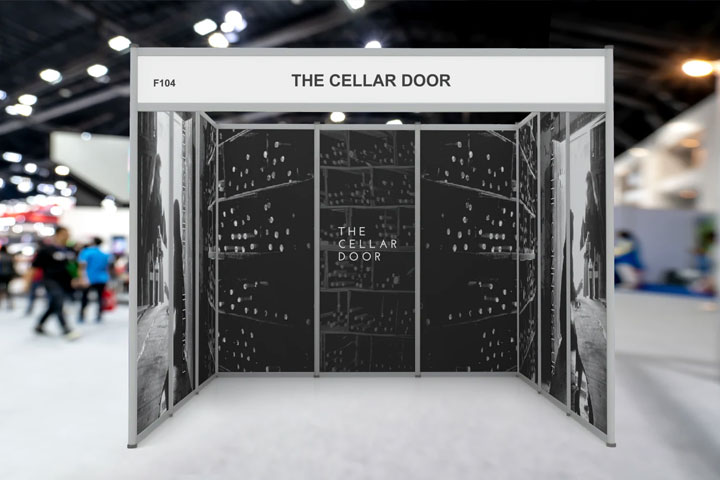
Your booth is your stage. A well-designed setup can significantly boost visibility and engagement. It acts as a vibrant space to showcase your story, values and offerings. Make the most of every element, from printing your logo on floor mats to displaying roller banners and signage on the walls.
Keep the following in mind:

The staff at your booth serve as brand’s ambassadors, representing your company to potential clients and visitors. It is essential to choose individuals who are personable, ensuring they can easily engage with attendees and make a positive impression. Knowledgeable staff members are also crucial, as they need to confidently answer questions and provide accurate information about your products or services. Additionally, selecting team members who are enthusiastic will help create a vibrant and welcoming atmosphere, drawing more interest to your booth.
Provide thorough training, covering:
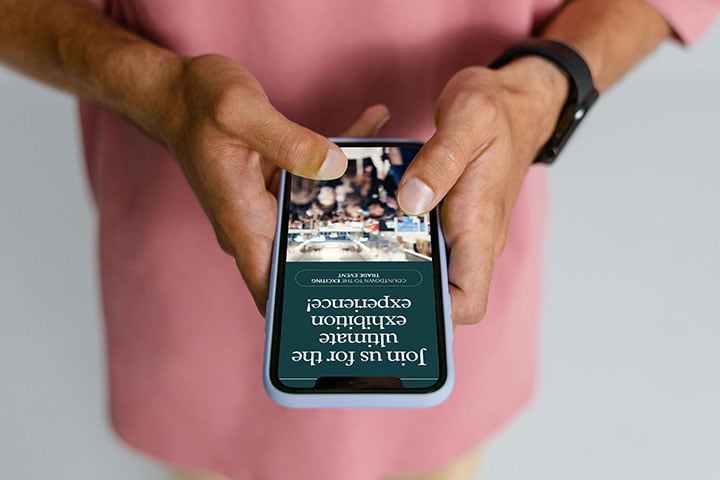
Generate excitement before your event by creating a strong pre-event buzz. Use digital channels such as social media, email campaigns and your website to share teasers, countdowns and exclusive updates. Engaging content like behind-the-scenes previews or influencer collaborations can amplify anticipation and encourage early sign-ups or participation
Leverage digital channels to build anticipation:
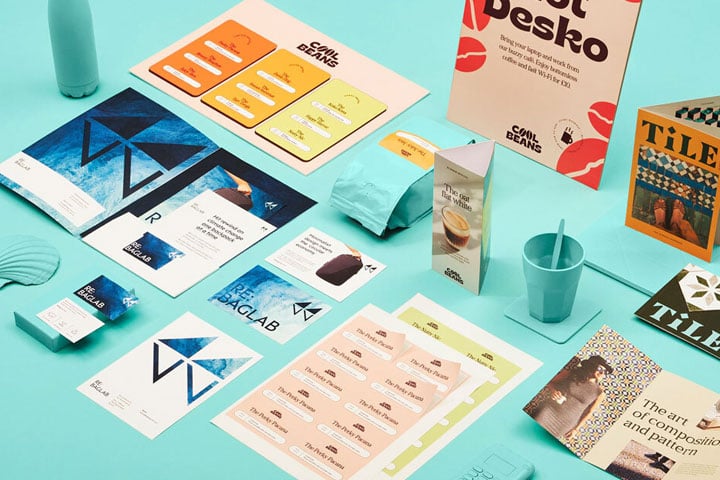
Stock your booth with items like business cards, flyers and promotional writing instruments to reinforce your professionalism and enhance your branding. Ensure that all materials are consistent with your brand identity, incorporating your logo, colours and typography for a cohesive look. Your promotional items should effectively communicate your key messages, making it easy for potential clients to understand what you offer and how to get in touch. By offering quality and branded materials, you enhance the overall perception of your business at the event.
In summary:
Many events offer apps or platforms to connect with attendees and promote your booth, making it easier to engage with potential customers before, during and after the event. These digital tools can allow you to share important updates, showcase products or services and schedule one-on-one meetings with attendees, enhancing the overall event experience. Additionally, some platforms offer features like live chat, video calls and virtual exhibitor halls to increase visibility and interaction beyond the physical space. By utilising these tools, you can build stronger connections and extend the impact of your presence long after the event ends.
Use these tools to:

The success of your exhibition presence largely depends on how well you engage with attendees. Establishing a connection through meaningful conversations, personalised interactions and actively listening to their needs can significantly increase interest in your products or services. Additionally, offering valuable information and addressing attendees’ questions or concerns in a timely and approachable manner helps build trust and credibility. By creating an inviting atmosphere and showing genuine enthusiasm for what you offer, you can turn casual visitors into potential leads and long-term clients.
Here are a few tips:
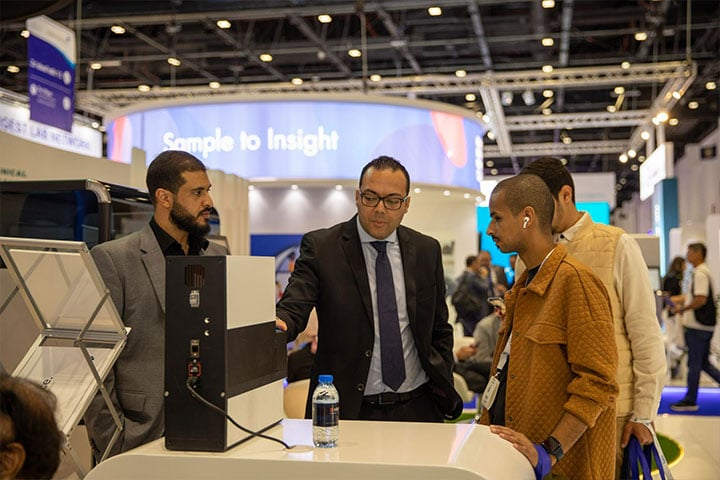
Interactive demonstrations are one of the most effective ways to captivate visitors. Whether it’s a product demo, live presentation or a hands-on experience, ensure it is engaging, concise and clearly communicates the value of your offering. Visitors are more likely to remember and appreciate your brand when they are actively involved in the experience, allowing them to better understand the benefits of your product or service. Moreover, interactive demonstrations foster a deeper connection with potential customers, making them more likely to take action or make a purchase.
In summary:

Have a robust system for capturing leads, whether through a digital app, a sign-up sheet or scanning attendee badges. Collect relevant information and take notes about each interaction for personalised follow-ups. Ensure that your team is trained to input data consistently and accurately, so that nothing slips through the cracks. Additionally, consider integrating your lead capture system with your CRM software to streamline the process and make follow-ups more efficient.
In summary:

While the event is ongoing, amplify your visibility by sharing live updates, photos and videos on social media. Use event hashtags and tag the event organisers to increase reach. Engage with your followers by responding to comments and sharing behind-the-scenes content to create a more personal connection. Additionally, collaborate with other attendees or influencers to widen your audience and build momentum throughout the event.
In summary:

Exhibitions are as much about connecting with peers as they are about engaging with customers. Attend networking sessions, workshops and panel discussions to build valuable industry connections. These events provide opportunities to share insights, collaborate on new ideas and stay updated on emerging trends. By actively participating, you can foster long-lasting relationships that can benefit your business or career in the long run.
In summary:
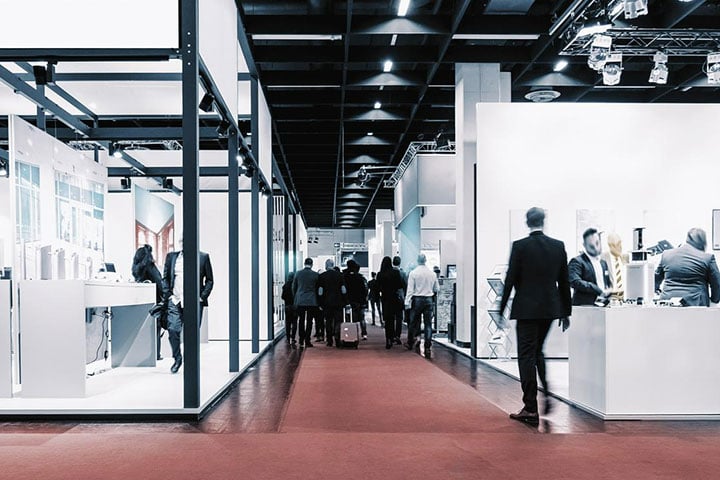
Walk the exhibition floor to observe competitor booths. Take note of their strategies, product offerings and how they interact with attendees. Pay attention to their booth design, engagement tactics and promotional materials. This insight can inform your future event strategies, helping you identify trends, best practices and potential gaps in your own approach. By understanding how competitors connect with their audience, you can refine your messaging and improve your presence at future events.
In summary:
Set up a method to track key metrics in real time. This data will help you assess the effectiveness of your efforts and adjust as needed.
Metrics include:

Once the event concludes, hold a debriefing session with your team. Discuss what went well and areas for improvement. Collect detailed feedback from team members and stakeholders to get a comprehensive view of the event’s performance. Use this feedback to refine your approach for future exhibitions, adjusting strategies to enhance attendee engagement and operational efficiency.
In summary:
In summary:
Use photos, videos and testimonials gathered during the event for post-event marketing. These visual assets help maintain engagement with your audience by showcasing key moments and feedback. Share highlights on your website, social media and newsletters to continue the momentum. This content can also be repurposed for future marketing campaigns or to promote upcoming events, keeping your brand top of mind. Additionally, consider creating a dedicated event recap page or video that reflects the event’s impact, allowing people who couldn’t attend to feel connected.
In summary:
Compare your event expenses against the outcomes to assess whether the investment was justified. This analysis will help you identify which aspects of the event delivered the highest return on investment (ROI) and where adjustments could be made for future events. Understanding the financial impact of each element can guide decision-making, optimise budget allocation and improve overall event strategy.
Metrics to assess ROI include:
Create a comprehensive guide detailing successful strategies, effective booth designs and lessons learned from past exhibitions. This resource will be invaluable for future events, offering insights into how to engage attendees, maximise space utilisation and increase brand visibility. It will also provide best practices for staff training, lead generation and post-event follow-up, ensuring that each exhibition is more productive than the last. By learning from past experiences and implementing these strategies, you can enhance your exhibition impact and achieve better results at future trade shows and conventions.
In summary:
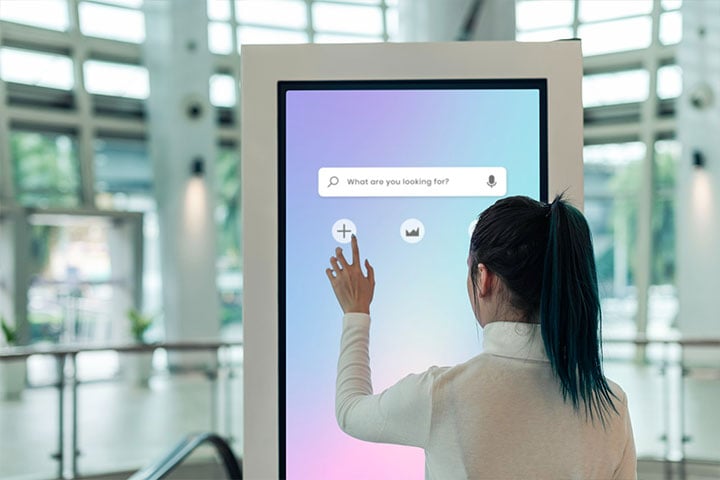
Stand out at future events by incorporating emerging technologies and trends, such as interactive displays, virtual or augmented reality experiences and artificial intelligence-driven personalisation. These innovations not only enhance attendee engagement but also position your brand as forward-thinking and adaptable in an ever-evolving landscape.
For example:
Stay active in your industry’s community year-round. This ensures your brand remains trending and builds credibility for your future exhibition efforts. Engaging consistently with industry professionals, attending networking events and contributing to relevant discussions fosters relationships that can lead to valuable opportunities. Additionally, staying visible and involved helps you stay ahead of the game, making your brand more attractive to potential partners and customers during upcoming exhibitions.
In summary:
Approach each exhibition with a clear vision, adapt based on your experiences and continuously innovate. With the right strategies and products like pop-up displays and roller banners, your participation in exhibitions will not just be an event but a cornerstone of your business success.
Unlock 5%! Subscribe & Save
Copyright © Cheap as Prints 2025
We use cookies to enhance your experience. By continuing, you agree to our Privacy Policy.
Select which cookies you want to allow:
Our last working day will be Friday, 19th December 2025 and we will reopen on Monday, 5th January 2026.
We encourage you to check product lead times on our website to ensure your orders can be delivered before our closure.
Take advantage of our seasonal promotions and place your orders now. We’ll process them promptly upon our return.
Save 5% on your order when you subsribe to our newsletter.